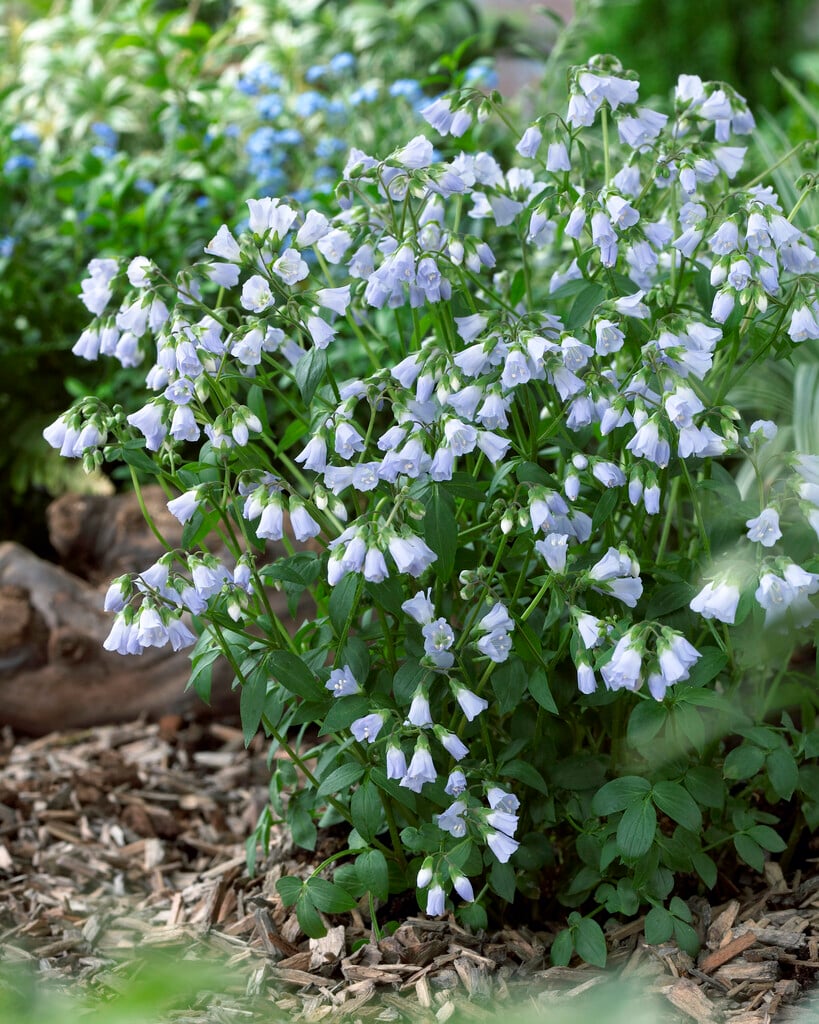Polemonium reptans
creeping Jacob's ladder
A bushy, clump-forming perennial to around 70cm high, forming a low mound of long, pinnate leaves, divided into 10-20 elliptic leaflets held in offset pairs. Nodding pale blue or white flowers are produced in loose sprays on upright stems in spring
Synonyms
Polemonium pulchellum Salisb.Size
Ultimate height
0.5–1 metresTime to ultimate height
2–5 yearsUltimate spread
0.1–0.5 metresGrowing conditions
Moisture
Moist but well–drainedpH
Acid, Alkaline, NeutralColour & scent
| Stem | Flower | Foliage | Fruit | |
| Spring | White Blue | Green | ||
|---|---|---|---|---|
| Summer | Green | |||
| Autumn | Green | |||
| Winter |
Position
- Full sun
- Partial shade
Aspect
East–facing or South–facing or West–facing
Exposure
Exposed or Sheltered Hardiness
H7Botanical details
- Family
- Polemoniaceae
- Native to GB / Ireland
- No
- Foliage
- Deciduous
- Habit
- Bushy, Clump forming
- Genus
Polemonium can be annuals or herbaceous perennials or upright or spreading habit, with pinnate leaves and usually clustered, tubular, bell, or funnel-shaped flowers
- Name status
Correct
How to grow
Cultivation
Grow in fertile, moist but well-drained soil, will benefit from some shade where summers are hot
Propagation
Propagate by seed, sown in containers in a cold frame in autumn or spring, or by division in spring. This species spreads naturally by creeping rhizomes
Suggested planting locations and garden types
- Cottage and informal garden
- Flower borders and beds
Pruning
Deadhead regularly to encourage new flowers
Pests
Generally pest-free
Diseases
May be susceptible to powdery mildews
Get involved
The Royal Horticultural Society is the UK’s leading gardening charity. We aim to enrich everyone’s life through plants, and make the UK a greener and more beautiful place.
